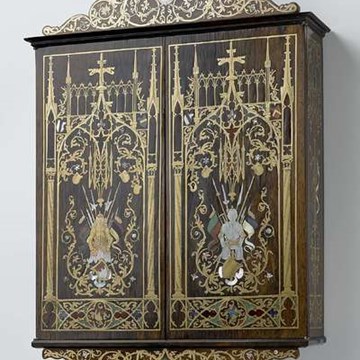"LIGHT THROUGH THE GLASS CEILING: Magdalena Avietėnaitė – Creator of the Country`s Image"
The year 1924. The first International Conference of Telegraph Agencies, attended by men delegates from 22 countries and one woman, a representative of Lithuania – Magdalena Avietėnaitė, took place in Bern, Switzerland.
She was probably the only woman in pre-war Lithuania to have made it possible to participate in the activity where only men were allowed! She would have been able to work as a minister or a diplomat, but... she was a WOMAN – "an unusual and abnormal thing" in the political life of that time.
Magdalena was an American Lithuanian, grew up abroad, received her education in Geneva and returned to the USA, worked in the fields of popularising history and science, edited the "American Lithuanian", wrote textbooks of English, French and German for the education of compatriots, a book for women about home, issued a publication about Lithuania in English.
In 1920, in response to the address of President Antanas Smetona, M. Avietėnaitė arrived in Lithuania and was employed in the Ministry of Foreign Affairs for various responsible duties. In 1924, she became Head of ELTA, in 1926 – Head of the Press Bureau, and later Director of the Press and Information Department. Under the leadership of M. Avietėnaitė, interwar Lithuania made itself known to the world! She has organised Lithuanian art exhibitions in Barcelona, Liege, Stockholm, Copenhagen, Brussels, Gothenburg, Chicago, New York. After the 1939 World Exposition “The World of Tomorrow”, the Mayor of New York awarded Avietėnaitė with the gold medal and the title of Honorary Citizen of New York City.
M. Avietėnaitė was one of the most important personalities in the sphere of interwar Lithuanian cultural diplomacy. Nevertheless, she failed to “break through the glass ceiling“ 1. The elite of Lithuanian diplomatic service did not dare to appoint a woman one of the Lithuanian diplomats!
The closed door to the world of diplomacy did not stop Avietėnaitė from working for her homeland and spreading light when it was most needed. She had exceptional courage: on 15 June 1940, M. Avietėnaitė and her colleague Elena Barščiauskaitė took out all secret files from the Ministry of Foreign Affairs, and later handed them over to the Head of the Lithuanian State Archives, Priest Juozapas Stakauskas. They managed to save the documents and take them outside the border of occupied Lithuania! Both women risked their freedom and safety. M. Avietėnaitė showed no less courage by rescuing Lithuania's gold reserves abroad.
In 1944, M. Avietėnaitė moved to the West. Her possessions fit in one backpack. Magdalena found her shelter in a war refugee camp, worked as the general secretary of the Lithuanian Red Cross, which operated abroad. She got involved in the activities of the Supreme Committee for the Liberation of Lithuania (Lith. VLIK)
In 1964, M. Avietėnaitė found her last shelter in Putnam, the home for elderly people under the care of the Sisters of St Casimir. Magdalena Avietėnaitė died at the age of 93. She was buried in Putnam, at the cemetery of the Heaven's Gate Monastery.
For her merits, M. Avietėnaitė was repeatedly honoured with the awards of the Republic of Lithuania and foreign countries, including the 3rd Class Order of the Grand Duke of Lithuania Gediminas, the 4th class French Order of the Legion of Honour
Magdalena Avietėnaitė was the only woman to hold a high-level position in the state apparatus in the interwar period. She was a person who initiated a campaign of Lithuania's public relations, which helped the world to learn about the achievements of Lithuania's art, economy or politics.
1 The metaphor “Glass Ceiling“ originated in the 1980s. It meant unvisible obstacles that limited women’s career progress.
Exhibition Curators:
Violeta Karmalavičienė
Kristina Stankaitė
Julija Tolvaišytė-Leonavičienė
Exhibition Partners:
KTU library
Kaunas Regional State Archive
Exhibitions and events

“LITHUANIA – THE LAND OF CROSSES”
Permanent exhibitionLithuanian crosses are a unique phenomenon. In 2001, UNESCO included Lithuanian cross-crafting in the representative list of masterpieces of the Intangible Cultural Heritage of Humanity. They are a...

“THE ARCHAICS: LITHUANIAN FOLK ART XVIII–XX C.”
Permanent exhibitionThe exposition aims to unfold our nation’s cultural heritage of the 18th – 20th centuries through the M. K. Čiurlionis National Museum of Art’s collection of Lithuanian folk art which is comprised...
Activities from this museum
We don't have anything to show you here.











